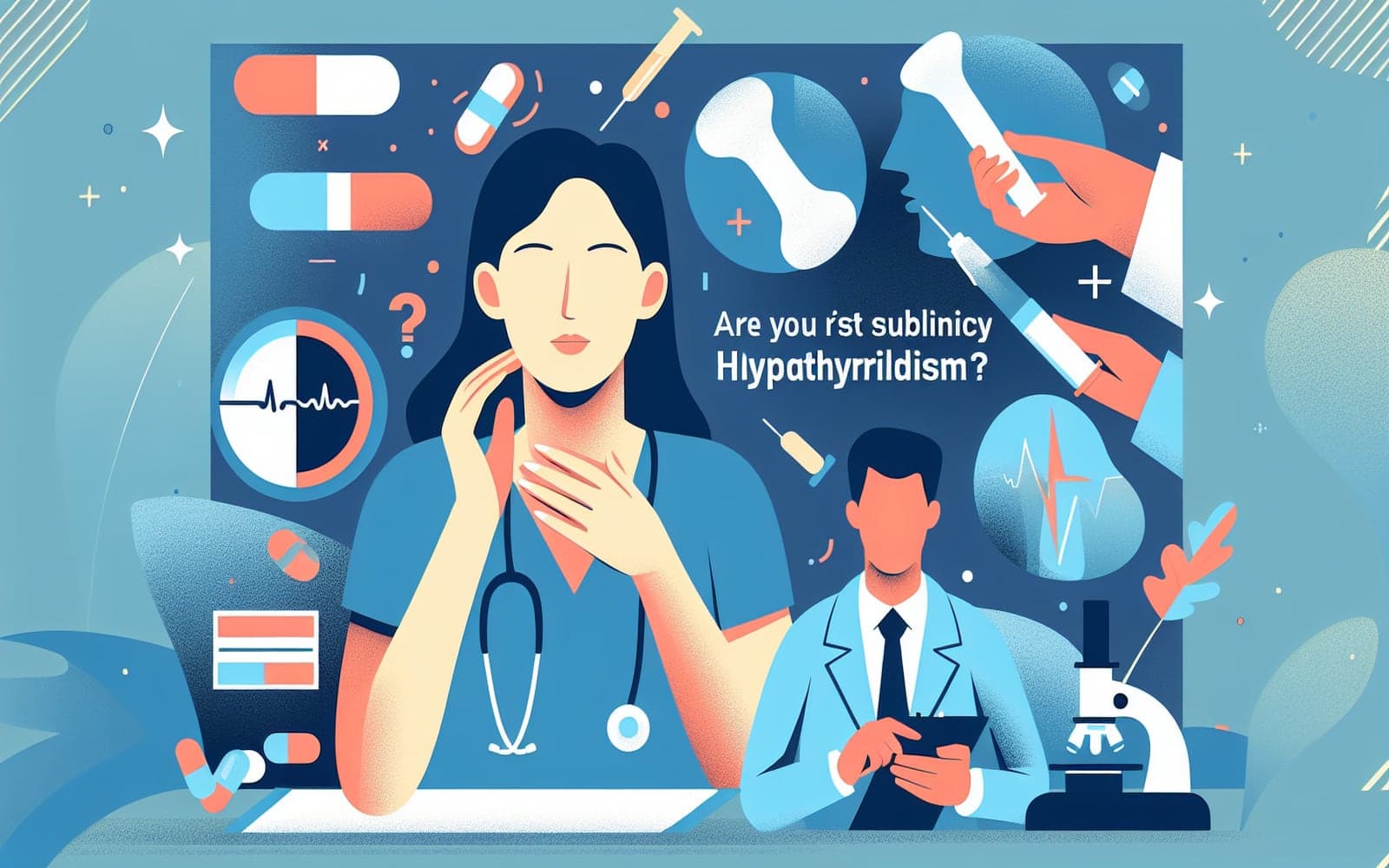Are You at Risk for Subclinical Hyperthyroidism?
Published: Apr 03, 2024

Medically reviewed by Benjamin Seth Martinez | MD, Statpearls - Director of Clinical Content on April 3rd, 2024.
Being aware of the risk factors for subclinical hyperthyroidism can help you take preventive measures. Discover if you fall into the high-risk category and what you can do about it.
Contents
Common Risk Factors
Subclinical hyperthyroidism is more prevalent in certain populations, particularly older adults over 55 years. Women and smokers are also at increased risk, as well as those living in regions with mild to moderate iodine deficiency. Understanding these risk factors can aid in early detection and prevention.
Thyroid Hormone Therapy and Its Risks
Excessive thyroid hormone therapy is a significant risk factor for subclinical hyperthyroidism. Patients undergoing treatment for hypothyroidism or thyroid cancer are often at risk due to intentional TSH suppression. It's crucial to monitor thyroid hormone levels regularly to avoid unintended subclinical hyperthyroidism.

The Impact of Iodine
Iodine intake plays a crucial role in thyroid health. Areas with mild to moderate iodine deficiency tend to have higher rates of subclinical hyperthyroidism. Additionally, exposure to iodine-containing medications and supplements can affect thyroid function, highlighting the importance of balanced iodine consumption.
Frequently Asked Questions
Older adults, women, smokers, and those in iodine-deficient areas.
Yes, excessive therapy can lead to subclinical hyperthyroidism.
Low iodine levels can increase the prevalence of subclinical hyperthyroidism.
Yes, smoking is a known risk factor for thyroid dysfunction.
Key Takeaways
Are you aware of your risk factors for subclinical hyperthyroidism?
Try it out—assess your risk factors and talk to Doctronic for guidance!Related Articles
References
Hollowell JG, Staehling NW, Flanders WD, et al. Serum TSH, T(4), and thyroid antibodies in the United States population (1988 to 1994): National Health and Nutrition Examination Survey (NHANES III). J Clin Endocrinol Metab 2002; 87:489.
Belin RM, Astor BC, Powe NR, Ladenson PW. Smoke exposure is associated with a lower prevalence of serum thyroid autoantibodies and thyrotropin concentration elevation and a higher prevalence of mild thyrotropin concentration suppression in the third National Health and Nutrition Examination Survey (NHANES III). J Clin Endocrinol Metab 2004; 89:6077.
This article has been reviewed for accuracy by one of the licensed medical doctors working for Doctronic. Always discuss health information with your healthcare provider.

